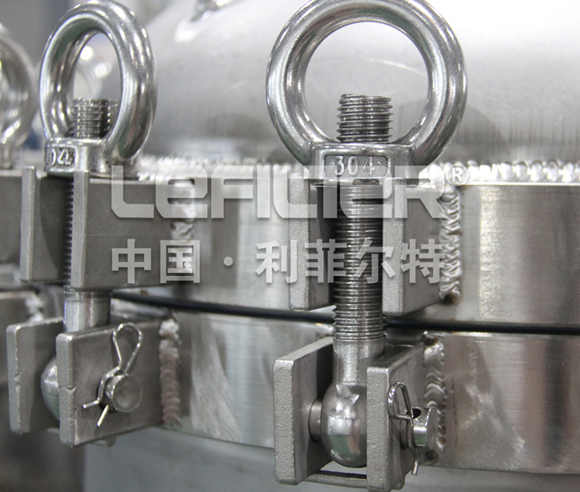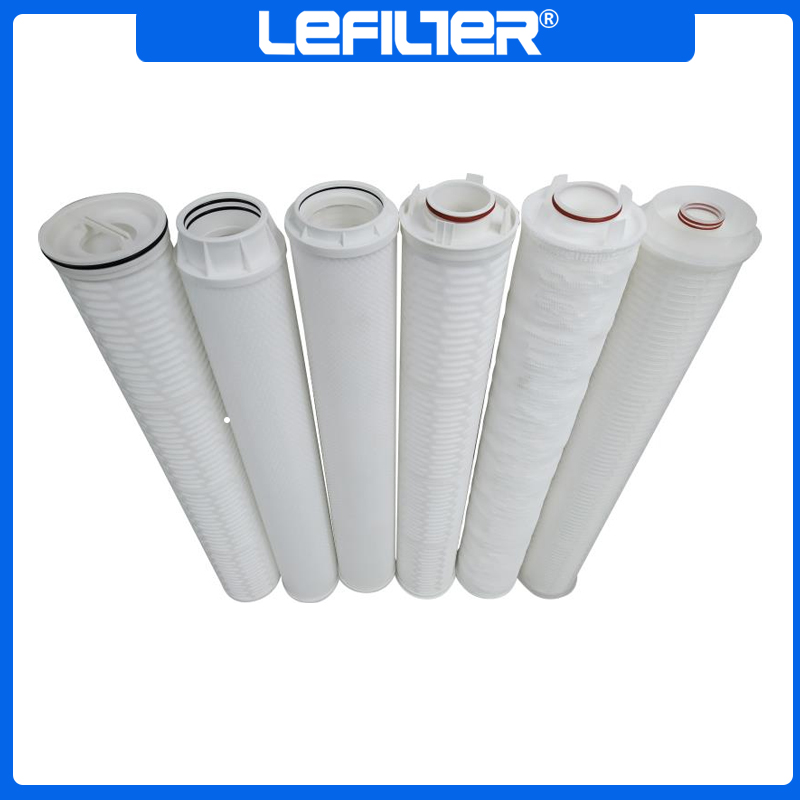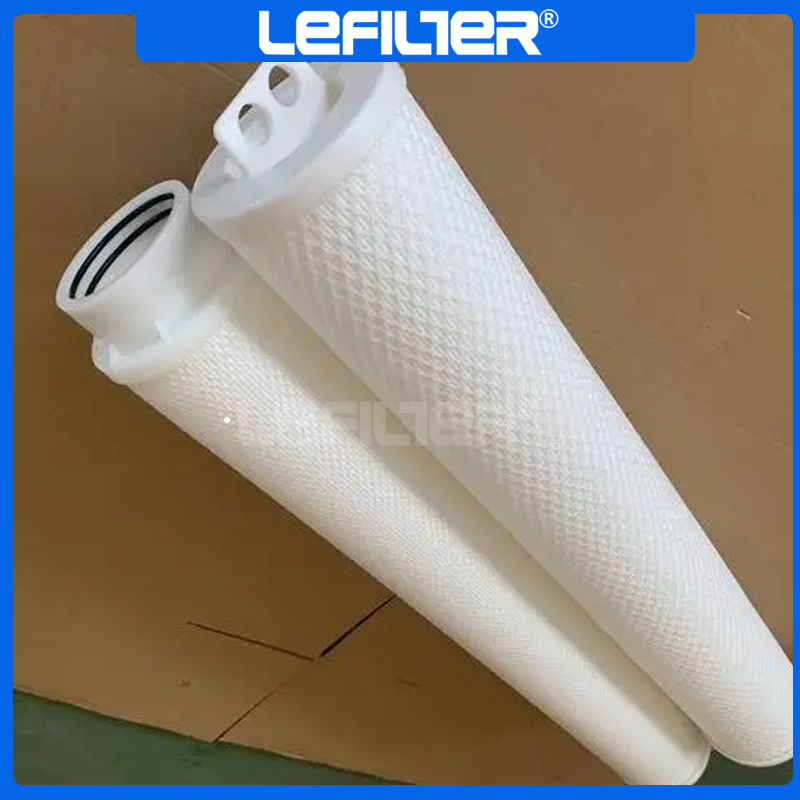Cartridge Filter Housing in Electronics Manufacturing
DATE:2024-10-21 Number of views: 1 Source:dongwenhui
In the electronics manufacturing sector, particularly in semiconductor fabrication, the purity of water used in processes is critical. Any contaminants present can lead to defects in microchips, impacting performance and reliability. Cartridge filter housings serve as essential components in achieving ultra-pure water filtration, ensuring that the water used meets stringent quality standards. We delve into the importance of cartridge filter housings in the electronics industry, highlighting their functions, applications, and benefits.

Understanding Cartridge Filter Housing
Cartridge filter housing is a device designed to encase one or more filter cartridges, facilitating the removal of contaminants from fluids. These housings can be constructed from various materials, including stainless steel and high-density plastics, to ensure durability and compatibility with ultra-pure water applications.
In semiconductor manufacturing, the filtration process is designed to remove impurities down to the molecular level, making cartridge filter housings crucial for maintaining the integrity of the final product. The design of these housings allows for efficient fluid flow, high filtration capacity, and easy maintenance, all of which are essential in a cleanroom environment.
The Importance of Ultra-Pure Water in Semiconductor Manufacturing
Semiconductor manufacturing involves numerous intricate processes that require extremely clean environments. Ultra-pure water (UPW) is utilized in various stages, including wafer rinsing, photoresist development, and equipment cooling. Any contamination—whether from particles, ions, or organic substances—can lead to defects in semiconductor devices, which can compromise their functionality.
The level of purity required is so high that water used in semiconductor fabrication must meet stringent specifications. This includes a resistivity of 18.2 MΩ·cm and extremely low levels of Total Organic Carbon (TOC). Cartridge filter housings are integral to this process, ensuring that the water used is devoid of any contaminants.

Applications of Cartridge Filter Housing in Water Filtration
In the context of ultra-pure water production, cartridge filter housings are employed in several key applications:
Pre-Filtration: Before water undergoes more advanced purification processes such as reverse osmosis (RO) and deionization (DI), cartridge filters serve as a first line of defense against larger particles, sediment, and other contaminants.
Post-Filtration: After primary purification processes, cartridge filters are used to provide additional layers of filtration, ensuring that any residual contaminants are removed before the water is used in semiconductor manufacturing.
Distribution Systems: Cartridge filter housings are also employed in water distribution systems within semiconductor fabrication facilities. They ensure that water remains contaminant-free as it is transported to various processing stations.
Contaminant Removal and Filtration Efficiency
Cartridge filter housings utilize different types of filter media to remove contaminants effectively. The choice of filter media depends on the specific requirements of the filtration process. Commonly used filter types include:
Depth Filters: These filters capture particles throughout the media, making them effective for retaining both larger and smaller contaminants. They are particularly useful in pre-filtration applications where water contains a wide range of particle sizes.
Surface Filters: These filters are designed to trap contaminants on their surface, providing a high level of filtration for clean applications. Surface filters are often used in post-filtration stages to ensure that ultra-pure water meets strict specifications.
The efficiency of cartridge filters in removing contaminants is measured by their nominal and absolute ratings. An absolute rating indicates the maximum size of particle the filter can effectively capture, while the nominal rating refers to the size at which a specified percentage of particles will be removed. Selecting the right filter for each application is critical in maintaining the desired water purity levels.

Impact on Semiconductor Quality and Yield
The quality of water directly influences the yield and quality of semiconductor devices. Any contamination during manufacturing can result in defective products, leading to significant financial losses. The use of cartridge filter housings to ensure ultra-pure water is an investment in quality assurance.
Filtration systems that include cartridge filter housings not only improve water quality but also enhance the overall efficiency of the semiconductor manufacturing process. By preventing equipment fouling and reducing downtime caused by contamination, these systems contribute to a smoother and more productive operation.
Maintenance and Operational Considerations
Maintaining cartridge filter housings is crucial for ensuring consistent performance in semiconductor manufacturing. Regular inspections and timely replacement of filter cartridges help prevent contamination and maintain the integrity of the ultra-pure water system.
Key considerations for maintenance include:
Monitoring Pressure Drops: Increased pressure drop across the filter can indicate that the filter is becoming clogged and needs replacement. Regular monitoring can help maintain optimal flow rates.
Scheduled Replacements: Establishing a schedule for filter replacement based on usage and performance metrics is essential to avoid unexpected contamination.
Sanitization Procedures: In cleanroom environments, sanitizing filter housings before cartridge changes can prevent contamination during maintenance activities.
The design of cartridge filter housings often allows for quick and easy cartridge changes, minimizing downtime during maintenance.

Sustainability in Water Filtration
As industries become more environmentally conscious, sustainability has emerged as a significant concern in semiconductor manufacturing. Cartridge filter housings can contribute to sustainable practices by ensuring that ultra-pure water systems operate efficiently and effectively.
Reduced Waste: By maintaining the purity of water, filtration systems can extend the lifespan of water resources and reduce the need for frequent replacements of water.
Energy Efficiency: Efficient filtration helps maintain the operational efficiency of equipment, leading to lower energy consumption during semiconductor manufacturing processes.
Environmental Compliance: Proper filtration practices ensure compliance with environmental regulations, reducing the risk of contamination and harm to ecosystems.
Future Trends in Cartridge Filtration for Electronics
The semiconductor industry is constantly evolving, and advancements in filtration technologies are likely to continue shaping the future of cartridge filter housings. Emerging trends may include:
Advanced Materials: The development of new filter media with enhanced contaminant removal capabilities may improve filtration efficiency and water quality.
Smart Filtration Systems: Integration of IoT technology could enable real-time monitoring of filter performance, allowing for predictive maintenance and reduced downtime.
Sustainable Practices: As the demand for eco-friendly solutions increases, cartridge filter housings may incorporate more sustainable materials and design features.

Conclusion
Cartridge filter housings are vital in ensuring the purity of ultra-pure water used in semiconductor manufacturing. By effectively removing contaminants, these filtration systems help maintain the quality of electronic components, reduce defects, and enhance production efficiency. As the industry continues to innovate, the role of cartridge filter housings will become increasingly important in meeting the challenges of modern semiconductor manufacturing.
FAQ
What is a cartridge filter housing?
A cartridge filter housing is a device that contains one or more filter cartridges used to remove contaminants from liquids, ensuring fluid purity in various applications.Why is ultra-pure water important in semiconductor manufacturing?
Ultra-pure water is crucial for removing contaminants during semiconductor fabrication, as any impurities can lead to defects in electronic components.What types of contaminants do cartridge filters remove?
Cartridge filters can remove a range of contaminants, including particles, ions, and organic substances from water.
How often should filter cartridges be replaced in semiconductor manufacturing?
Replacement frequency depends on usage and system performance, but regular monitoring and scheduled replacements are essential to maintain filtration efficiency.What materials are cartridge filter housings made from?
Cartridge filter housings are typically made from materials like stainless steel or high-density plastics to withstand harsh conditions and maintain water purity.What are the benefits of using cartridge filter housings in electronics?
Cartridge filter housings improve water quality, reduce defects in semiconductor manufacturing, enhance operational efficiency, and contribute to sustainability.How do depth and surface filters differ?
Depth filters capture contaminants throughout the media, while surface filters trap particles on the surface, making them suitable for different filtration applications.What are some future trends in cartridge filtration for the electronics industry?
Emerging trends may include advanced materials, smart filtration systems, and sustainable practices to enhance filtration efficiency and reduce environmental impact.

Industry Solutions
Pure Water /Ultra Pure Water System


